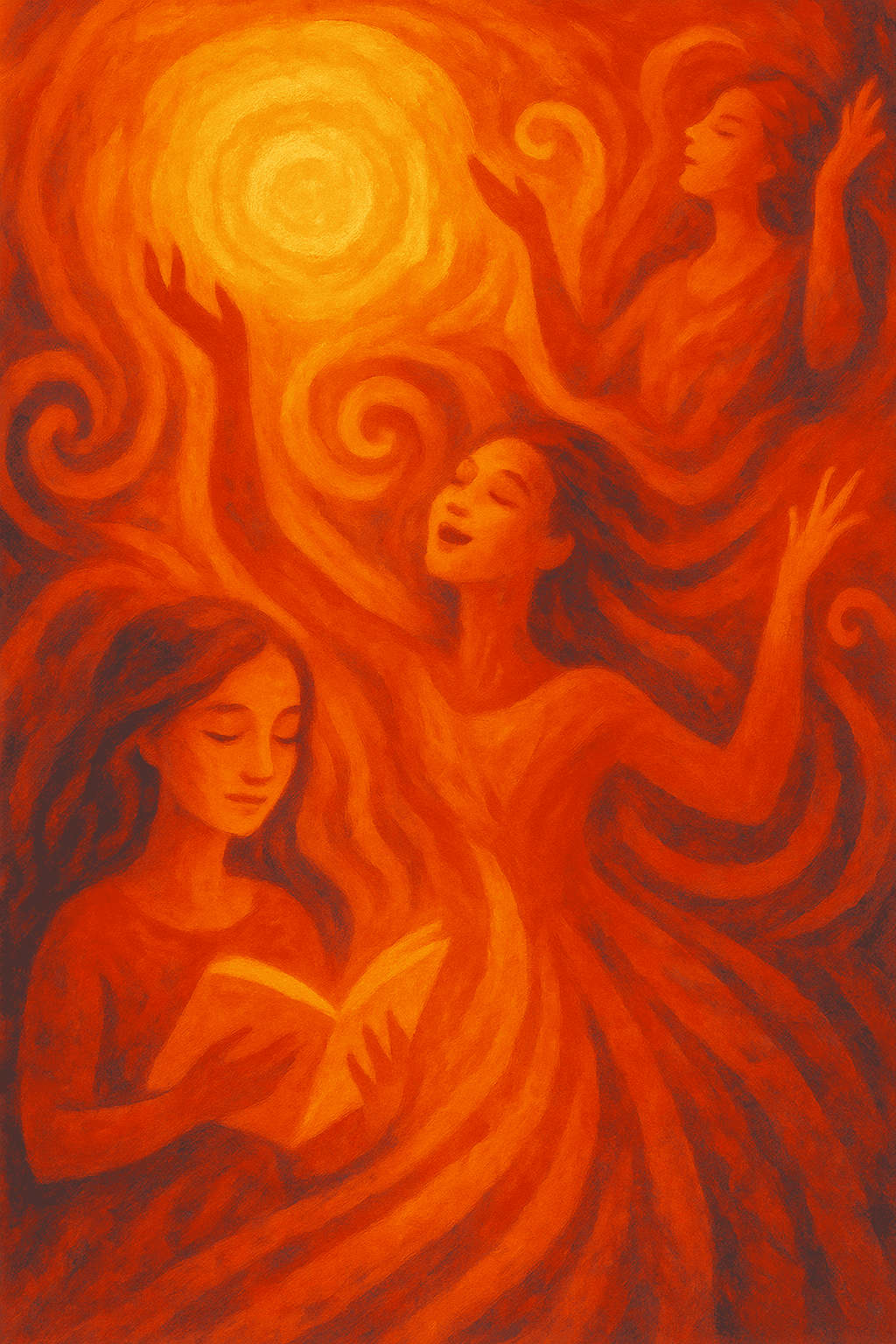On a quiet Wednesday evening in Iskenderun, with the hum of early summer in the air, a dozen teenage girls opened their laptops to find themselves not in school, not at home—but in something closer to a chorus. Their teachers that day were not just instructors, but fellow performers: Heather, joining live from Korea where the clock had already turned to Thursday, and Ece, her musical co-pilot, beaming in from Pittsburgh. Three time zones, one classroom, and the kind of rhythm only Be the Voice of Girls can make possible.
This was the first class in June’s “Art of Music” series for Be the Voice of Girls, and from the first lyric, the session smoldered.
The song was Alicia Keys’ “Girl on Fire,” but the real heat came from the conversation. Before the music even played, Carl had already pasted the full lyrics into the chat. Ece and Heather introduced the song’s background, not just as a hit single but as part of a larger story—Alicia Keys’ graphic novel for young adults and her ongoing work as a musician, entrepreneur, and activist. For the girls, most of whom had never heard of Alicia Keys before, this was a window into a different world.
And then they started talking about fire.
It began with a simple question: What does “on fire” mean?
“Maybe she is unstoppable?” ventured one girl. Another offered “flame.” “Burnout” came up, too—along with “fuel,” “gasoline,” and idioms like “add fuel to the fire.” What unfolded next was a masterclass not just in English but in symbolism. Ece gently pushed them to think about which fire expressions were positive and which were negative. “Playing with fire”—dangerous. “To have a fire in your belly”—driven. “To set the world on fire”—ambitious.
One student pointed out that Turkish has a version of “add fuel to the fire” too: yangına körükle gitmek, which literally means to bring wood to a fire. Suddenly, language was no longer just a skill to be learned but a bridge across cultures.
Heather and Ece then turned their focus to the lyrics. The girls watched the video and then listened again, line by line. “She’s just a girl and she’s on fire,” Alicia sings. But who is this girl? And what is she burning?
“She looks small like a flame,” Ece offered, “but she is powerful.”
They parsed metaphors, examined idioms, and debated the imagery—“head in the clouds,” “feet on the ground,” “top of the world.” They found their way to Mary Poppins, of all places, when Heather spotted the scene in the video where a woman cleans her apartment with a snap of the fingers.
The girls were invited to sing, of course. Some sang. Others mouthed the words. Heather sang too, quietly, knowing her son was dozing nearby. That’s how it goes at BVG. No one sings alone. In this peculiar moment—half bedtime story, half international concert—the girls clapped with emojis, hearts floated across the screen, and confidence grew not from perfection but from participation.
After the last verse played and the final “Oh-oh-oh” faded, Ece asked: Why do you think Alicia Keys wrote this song?
One girl said she thought Alicia Keys wrote the song “to herself… so she could feel confident.” Another said it was “about showing that girls are powerful, even when people underestimate them.”
Heather nodded. “Each of you is like a small flame,” she said. “But together, you light up the world.”
Ece, ever the music-lover and lyrical guide, finished the session with a surprise clip from Mary Poppins. The song? “A Spoonful of Sugar.” The moral? Even hard things become easier when you add joy—and maybe music—to the mix.
At the end, one girl raised her digital hand. She didn’t have a question—she had an idea: “Maybe we can share Turkish songs with you, like you share English ones with us?”
Ece and Heather’s faces lit up. “That,” said Heather, “would be fire.”
—
This session was not just a lesson in vocabulary or music. It was a session in transformation. It reminded us that language and learning are not ends in themselves—they are flames we pass from one hand to another. And when held gently, with trust and rhythm and song, they do not burn out. They blaze. Together.
Next week, the music continues. But for now, the chorus echoes:
This girl is on fire.
And she’s not backing down.


